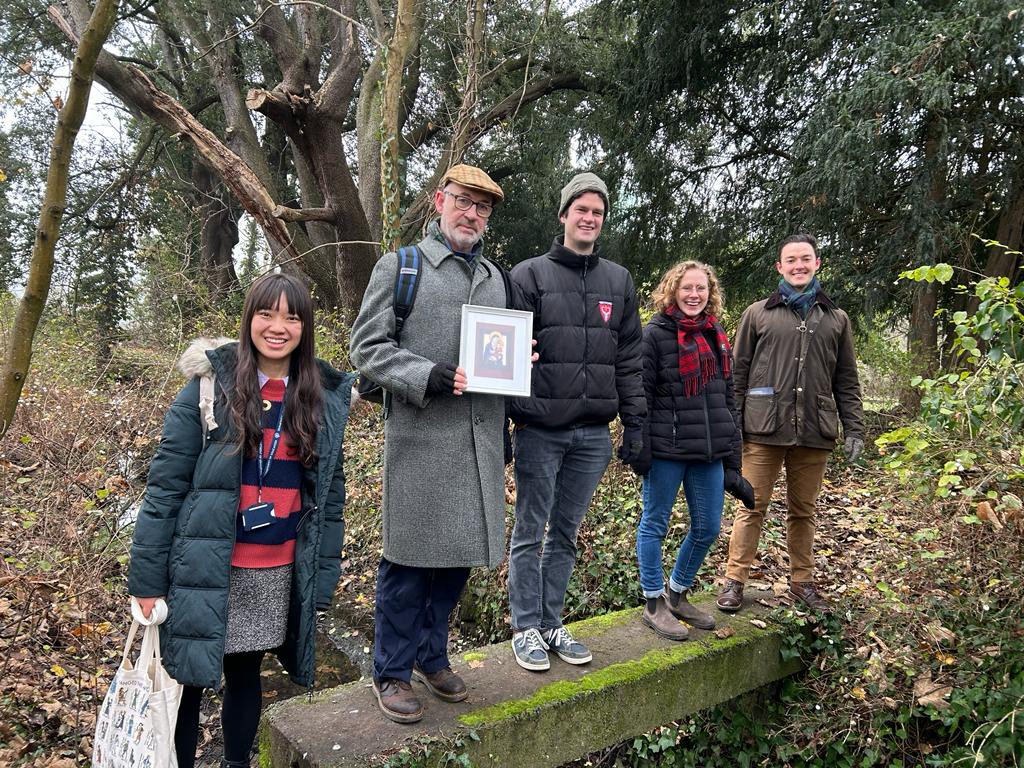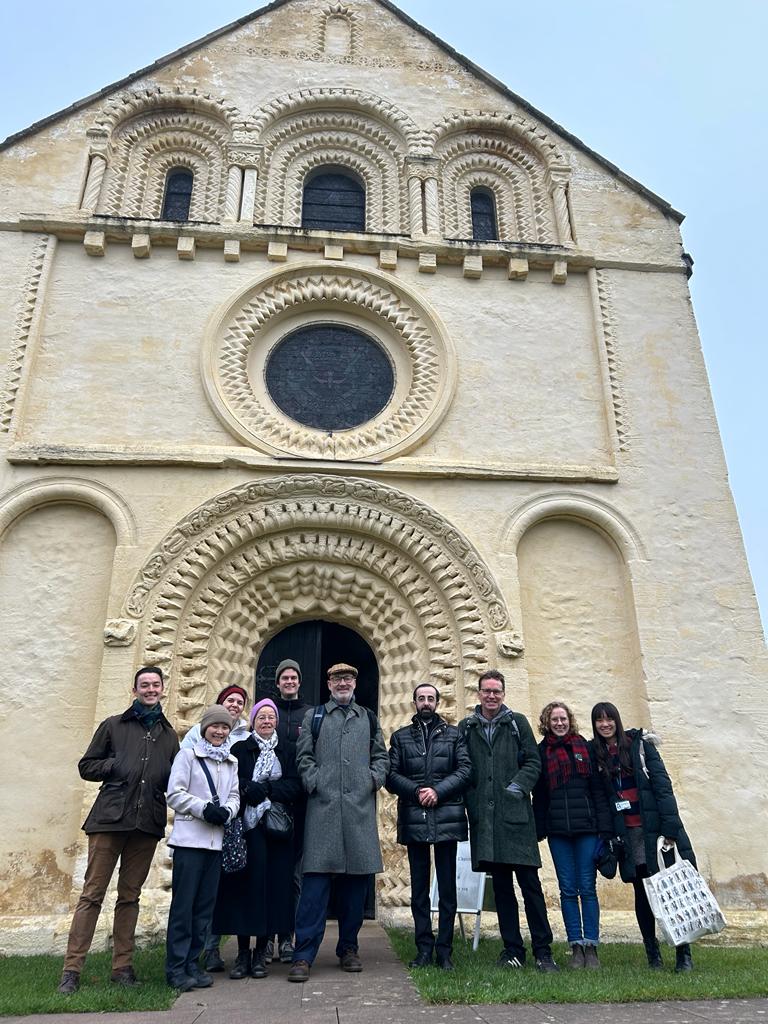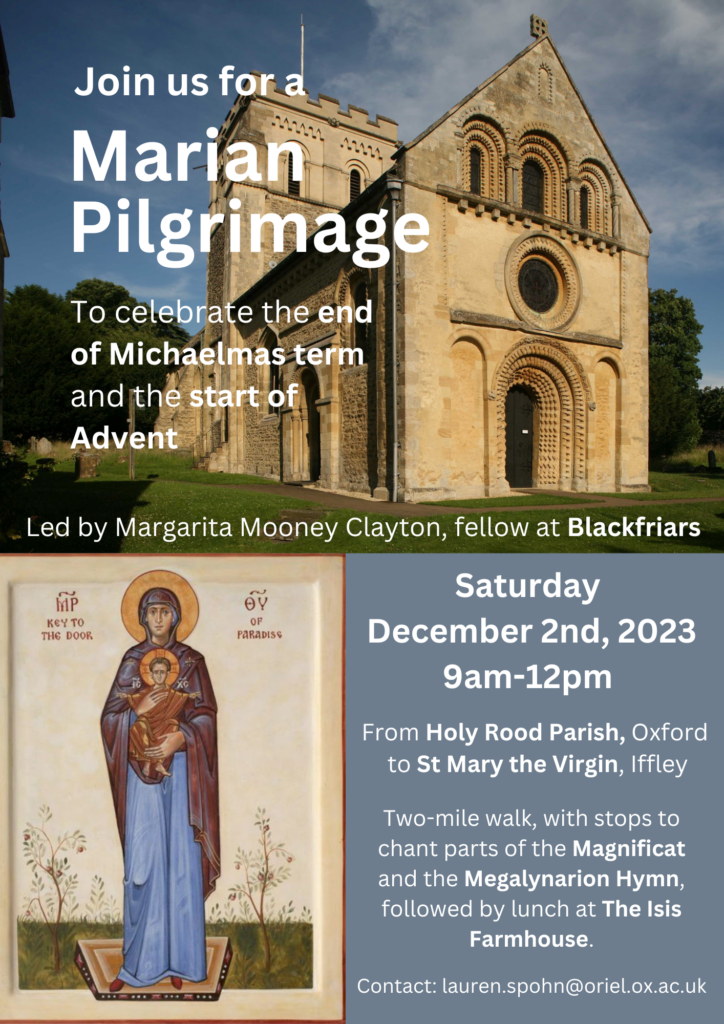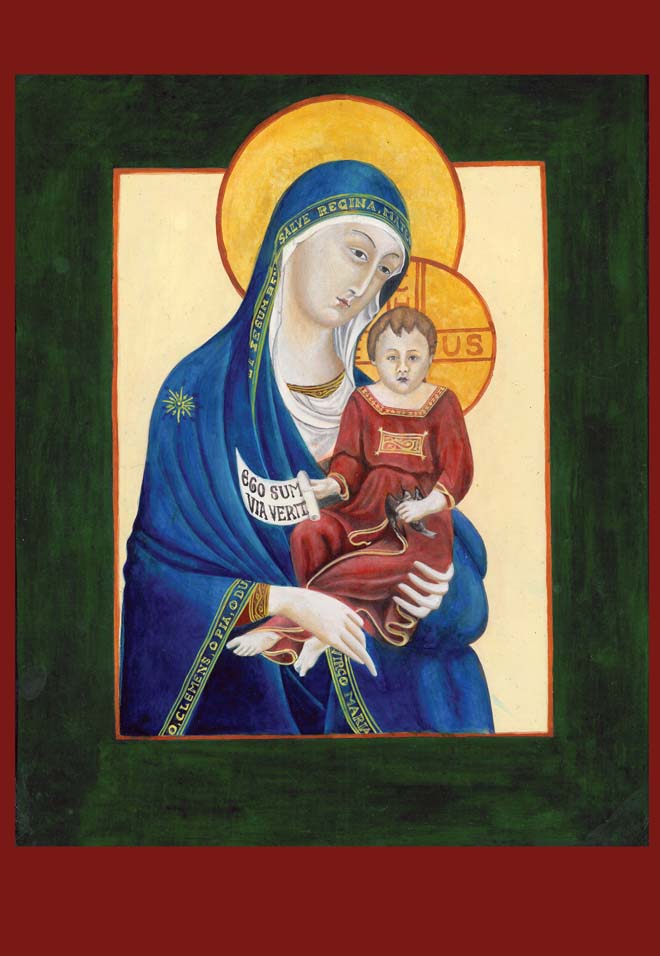Transmiting the Faith, contributing to the culture, and building community amongst friends.
Here are some photos and amateur videos of a pilgrimage that Margarita and I undertook recently, on the Saturday morning before the Solemnity of the Immaculate Conception.
The idea began because Margarita is on sabbatical at Blackfriars College, the Dominican college in Oxford. The Dominicans have a great devotion to Mary of course and Margarita offered a weekly breakfast seminar group, open to all, focussing on the role of Mary as Theotokos. It was offered especially for searchers who are looking at the Faith and the Catholic approach to Mary, including pilgrimages and devotions. It attracted many Protestants who were curious, as well as Catholic and Orthodox students. The core of this group was enthusiastic to go on a pilgrimage and so we organized one together.
Our pilgrimage was a deliberately low key, do-it-yourself affair, but all the more joyous an occasion for it. It is another expression in Margarita and my cultural mission of trying to offer the faith through personal connection and hospitality to others. The content, route and day were totally our own idea – we weren’t following any precedent that we were aware of. We just decided to create our own pilgrimage and invite people to be our friends along the way. It was planned and organized with an Oxford graduate student Lauren Spohn and had great support from a core of singers who helped us sing the eight stations along the towpath. Eleven people came along and braved the cold – it was below freezing the whole time and the coldest day of the winter so far.
We met for Mass at Holy Rood Catholic Church in Oxford after which the Pastor, Fr Daniel Lloyd sent us on our way (well wrapped up!) with the Salve Regina, a blessing and solemn recitation of a Pilgrims’ Prayer in which St Rafael was implored to accompany us. I am certain he was there with us! Our destination was the beautiful 12th-century church of St Mary the Virgin, Iffley.

Those who came were a range of people – several academics and university graduate students, a lawyer and two Dominican Sisters. One was a grad student from China who was curious and had no prior knowledge of Christianity.
We sang opening hymns and at each station we paused and boldly sang – for all nearby to hear – a verse of the Magnificat and a hymn called the Megalynarion. I led the line of people holding an icon of the Theotokos and we decided to progress in silence. At the first station, a man who was coaching a rowing eight in the River Thames stopped and looked at us. He beamed broadly and said, ‘How wonderful to hear the Magnificat sung like that!’ Others looked at us quizzicly, some smiled, some seemed less happy with what they saw, but none could avoid noticing that we we doing this for Our Lady!
The words of the Megalynarion are:
More wonderful than the cherubim and more glorious beyond compare than the seraphim. Who, without stain, bore God the Word, you are truly Theotokos, we magnify you. Here are a short series of videos of us along the way.
When we got to the church in Iffley, we put down icons to the Theotokos, Christ on the Cross, Christ in Glory and St Michael. We sang the lines of the Magnificat, the Megalynarion, the Our Father, the St Michael Prayer and finally the Salve Regina. Overall it took less than two hours!

The wonderful thing about pilgrimage is that it requires all those present to make a sacrifice of time and give something of themselves. This inevitably opens the hearts of those present to the mysteries being contemplated in a way that attending a lecture could never do. The shared experience brought us together and established, one personal interraction at a time an authentic culture of faith that has the power to draw others in, because all are so obviously invited. It is easy to organise something like this and doesn’t require a lot of effort, but it does require commitment a little bit of sacrifice.
We invite friends to our home regularly to sing the Office and for dinner as part of our witness of the Faith. This is something else by which we re-establish a Christian culture of faith through personal contact. We hope to do many more in the future. We also hope to encourage people to think about organising their own. This format is adabtible – we can easily change the hymns to suit the place and the occasion.
The pilgrimage was consummated six days later for those who participated in the Feast of the Immaculate Conception, December 8th. Margarita and I attended a beautiful sung Mass at Holy Rood, the church where we set out from earlier that week.
Below I have posted an excerpt from the front sheet of the materials handed out on the day that explained the structure, and the poster that was circulated to attract people:
We will gather in the car park of Holy Rood Church immediately after Mass for the first station. We encourage you to walk silently together reflecting on words we have sung. We will pause six times along the way with a signal from the cantor. At each of these stations the cantor will sing a stanza of the Magnificat and then we will all sing the Megalynarion (the ancient hymn to Mary sung in the Byzantine liturgy daily). When we get to St Mary the Virgin, we will go into the church, gather before the altar with the icons set before it, and sing the final station and the closing prayers and hymns. We then adjourn for lunch at a nearby pub for any who wish to come.
Eight pilgrim stations – we have eight stations. The first seven represent the old covenant and the seven days of Creation. The eighth represents the new covenant ushered in by the life, death and resurrection of Our Lord, who is called the ‘eighth day’ of Creation. Also, seven repetitions, in the number symbolism of the Old Testament constitute the equivalent of a single, perfected or continuous act. As the Psalmist says, ‘The words of the Lord are pure words: as silver tried by the fire, purged from the earth refined seven times.’ (Ps. 12:6). For the Christian, eight repetitions represents superabundance, an overflowing of that old perfection into all things, made new in Christ. The governing number of the pattern of Christian liturgy is eight, rather than seven. For example, the weekly day of worship was moved from the Jewish celebration of the Sabbath (Saturday) on the seventh day, to the Lord’s Day (Sunday), which is simultaneously the eighth day of the previous week the first of the next. This is why also we have octaves for feast days in the liturgy. There are many examples, through centuries of tradition, where we see the pattern of eight manifested in sacred time and, for example, in sacred art and architecture.
By chanting eight stations we hope to participate in the Pauline exhortation to pray without ceasing:
“Rejoice always, pray without ceasing, give thanks in all circumstances; for this is the will of God in Christ Jesus for you” (1 Thessalonians 5:16-17).
The icons – we will lay down the three core and essential images for worship: Our Lady showing us her Son, Christ on the Cross, the Risen Christ. These together communicate essential truths of salvation history, the person from whom Our Lord who is both God and man received his humanity; the life, the death, and the Resurrection of Our Lord. And they tell us that we participate also in that story, putting on Christ. St Augustine said that when we sing our prayers we pray twice. I would extend this argument and say that when we sing our prayers and engage with sacred art and consider our posture we engage the whole person, body and soul, in what becomes a multifaceted act of worship.


From the Beauty | Catholic culture | David Clayton | Devotions | Educating For Beauty & Wisdom | Mary | Pilgrimage | Sacred Art | Theotokos series
View more Posts